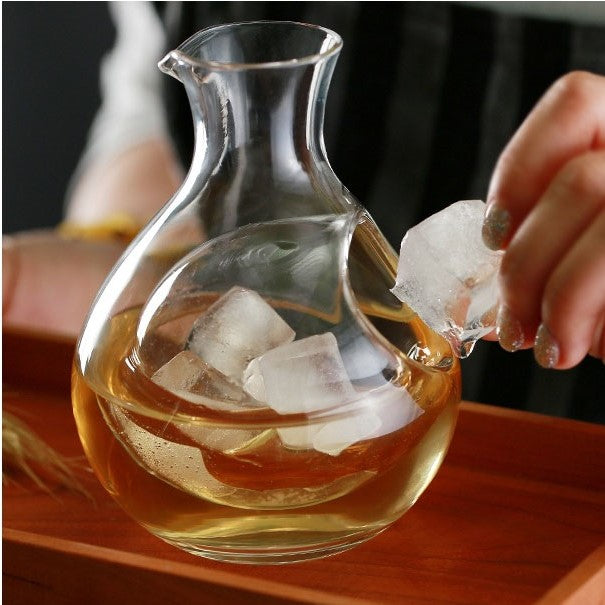Omotenashi
In 2021, I found myself sitting with some new customers at a sushi bar in Austin, TX. The waitress came to our table and placed a bottle of sake that looked like this:

I was in complete awe! Our customers must’ve found me crazy as I silently inspected this newfound container. The design is remarkable-the ice is separated from the liquid, brilliantly chilling the drink without the inevitable dilution. In that moment, I realized this is how I ought to treat everyone I serve for the rest of my life.
Months later, I discovered this is to be a perfect example of “omotenashi”. Omotenashi (oh-mo-teh-nah-shee) is a common expression in Japanese service industries. The term originates from tea ceremonies, where tea masters would make tea directly in front of their patrons. “Omote” means public face. “Nashi” means nothing. No hiding, no pretending, just honest and transparent work (Michelin). The term can also be associated with general hospitality. In western culture, we usually hear the phrase “the customer is always right”. But what if the customer isn’t an expert or doesn’t want to be encumbered with tedious decision-making? With omotenashi, the needs of the guest are anticipated before they even ask.
Whether it be inviting a guest into your home, an act of business, or engineering a machine, the principle omotenashi is rooted throughout daily life. At hotels, guests’ room temperatures, meals, and even pillow types are all remembered for their future stays. In restaurants, neatly rolled towels called oshibori are served warm or cool, depending on the weather, to relieve the guest from the outside. In cars, the doors automatically unlock when you shift the car into “park”, as it’s intuited that the passenger wishes to exit the vehicle shortly after parking (this is my favorite example!)
As I enter my new job as Head of Customer Success at Kibu, I want to bring in omotenashi as a core value to my work and the company. I want our software users to anticipate the needs of the guest that is intuitive, gentle, and delightful. I can see us doing this in a couple of ways:
- At the end of the month or quarter, we can anticipate that a lot of our customers will need reports. Our product should automically surface notifications about our “Data” feature to our users at these relevant times. Further, the Customer Success Manager could reach out to inquire about their reporting needs and remember the reports they always require.
- Analyzing how our customers use the product is a great way to proactively engage with customers over relevant conversations. For example, if I see one customer keeps taking notes in our tool in a consistent format, that could be a great opportunity to let them know about our “Note Templates” feature- explaining how two minutes of configuration will make everyone’s lives easier.
- A lot of our users are not technical. This means that documentation must be incredibly simple and focused. Kibu’s Resource Center should be filled with user story-driven help articles. Typically, our customers don’t just want to take notes; they want to track attendance as well. I should make sure to have an FAQ, around that specific user story for optimal customer satisfaction. I also want to make sure the help text inside our app is as closely integrated with our Resource Center as possible.
- Our livestream calendar is constantly updating. We should make it seamless for our customers to see upcoming events on their preferred agenda planners, commonly Google Calendar and Outlook. By Kibu coming to you, we can reduce change management for our customers while welcoming them to our most intimate offering.
Beyond Customer Success, there are many cuts and bruises our customers may experience in their entire journey with us: marketing, sales, product… even legal! I’m a firm believer that paying attention to the details and introducing moments of delight is what builds customer loyalty. Omotenashi instills this belief and points to the entire nation of Japan as a success story. I’d love to have a sake bottle in the middle of the office as a reminder to the team! 😄